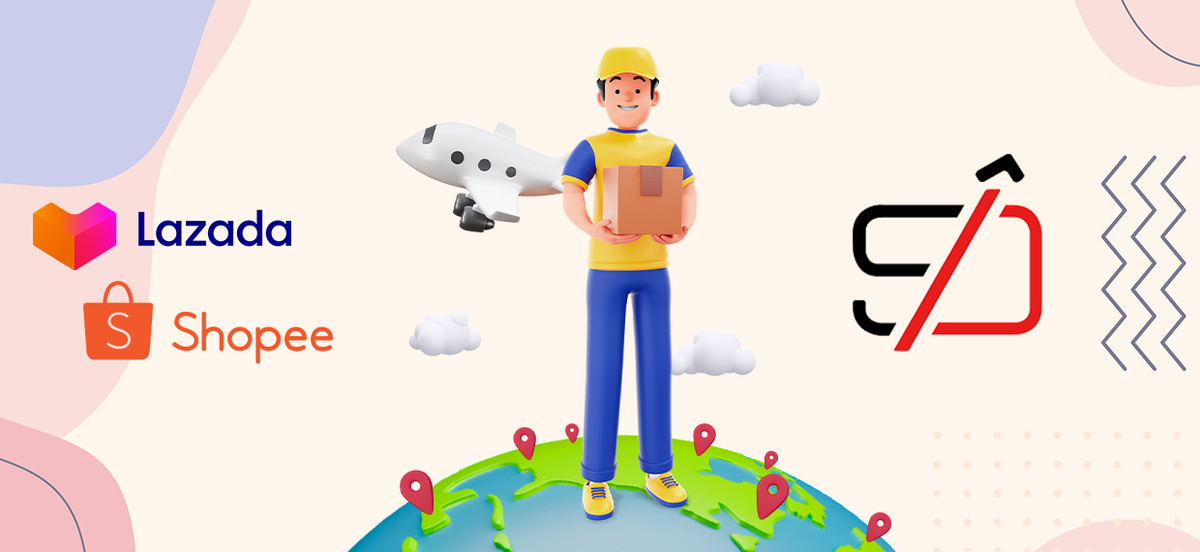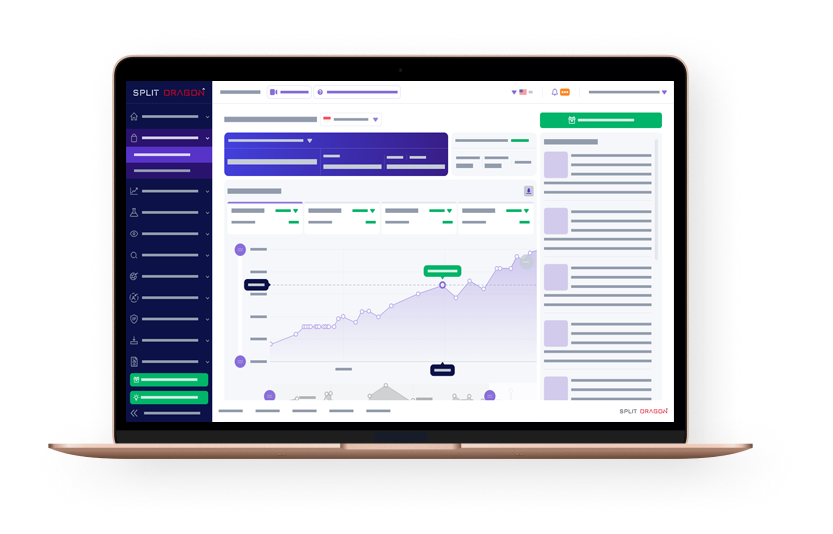The recent COVID-19 clearly defined the crucial role of international shipping and delivery in e-Commerce and online multi-vendor marketplaces.
When e-Commerce became the forefront of retailers, delivery services became an essential service provider not just domestically but also internationally and this includes Southeast Asia.
Ninja Van, a tech-enabled logistics company who caters businesses across Southeast Asia, saw a spike of delivery demand up to 60% in April and May 2020. Likewise, Singapore developed 1,000 parcel locker stations to cater to the increased delivery demand in the country. Other SEA countries like Malaysia and Indonesia also did the same.[*]
That being said, SEA’s logistic market is expected to grow up to 5.5% in 2025 and will account for $55.7 billion in the same year.[*]
However, international shipping is challenging, even in the modern world. Possible complications such as taxes, duties and even the weather, are making merchants cautious to open their stores to the world.
But if you do your research and due diligence, international shipping can offer immense potential to grow your business.
To give you a better perspective, let’s take a look at how Southeast Asia is performing in terms of international shipping. Learn how you can strategize your logistics so you can bring more revenue to your business and avoid expensive mistakes.
Logistics landscape in Southeast Asia
The growing number of already 600 million shoppers— the majority of which tapped into online multi-vendor marketplaces, stimulated businesses to include Southeast Asia in their target market.
However, the acceleration of the supply chain didn’t come easy. Here’s why:
The ASEAN region comprises 11 countries that are unique from each other. There are differences in language, culture, logistical infrastructure, and regulations.
These diversified issues give rise to complications in logistics and international shipping in Southeast Asia countries.
Another important thing to consider is that the supply chain in Southeast Asia has yet to reach maturity.
Compared to Amazon’s fast network, expert warehousing strategy, and advanced technology, Southeast Asia is still currently dominated by third-party logistics service providers. This means that the warehousing is still inefficient, resulting to more expensive shipping rates.[*]
However, it is undeniable that the logistics sector in SEA is in its exciting period of transformation and innovation.
Driven by e-Commerce growth, companies are seeking reliable logistics service providers. Good thing that the Southeast Asia-based businesses are making monumental efforts to meet this demand.
Alibaba, for example, expands its warehouses in China’s export-focused cities and at the same time, launched community-based parcel consolidation to support small to medium entrepreneurs in the region.
This enables express delivery services in Singapore, Thailand, the Philippines, and Malaysia, which will allow consumers to receive their parcels in as fast as 3 days. [*]
Singapore also ranked number 1 out of 155 countries around the globe in terms of competence and timeliness according to the World Bank’s Logistics Performance Index.[*]
Moreover, Southeast Asia is located in the center of major international sea trade and aviation routes, making it a potential major hub in the logistics industry.
In a report done by McKinsey, in both GDP and e-Commerce logistics, many Asian countries are expected to recover faster from the economic effects of COVID-19 than the rest of the world.[*]
Currently, China, Japan and India dominate the largest logistics markets in Asia, while Indonesia, Vietnam, and Thailand show the highest growth potential.
e-Commerce benefits of international shipping
Shipping and delivery are some of the key drivers of sales in e-Commerce. It will expand your business across borders and reach online shoppers across the globe.
Let’s take a look at these figures:
- By the end of 2021, there will be 2.14 billion digital buyers worldwide
- Singapore and Malaysia account 50% of the total cross-border e-commerce market
- 55% of all online shoppers in Singapore involve overseas sellers
- Cross border e-commerce is projected to account 22% of e-Commerce shipments by 2022
- 67% of consumers shop overseas because prices are lower outside their country
Here are the major advantages of international shipping in e-Commerce:
Reaching new markets
Opening your shop to overseas customers helps you tap a lot more prospective customers. When you have access to new markets, your business will have the potential to build a new customer base.
Widen brand awareness
If your brand or product is already established locally, then it only makes sense to move forward by introducing it overseas. This will also expand your brand’s visibility. Plus, become more marketable in other parts of the world, especially when the local businesses haven’t met the demand that you can fulfill.
Increase revenue potential
By introducing your products to new territories, you will gain new customers. This brings you bigger revenue potential, which you can use to expand and grow your business further.
Advantage against competitors
This is best for businesses that are operating in a saturated market. Bringing your products to markets your competitors haven’t penetrated yet will give you a competitive edge. This will give you time to establish yourself and an opportunity to become a brand that these markets can trust.
These are just a few of the benefits you can get when venturing to ship overseas.
However, you will need the right delivery strategy so you can meet your customers’ expectations and provide an exceptional customer experience.
Good thing you don’t have to take the high road to achieve that. You just need to be able to comprehend the process and regulations of shipping from one border to another so you can manage expectations and of course, calculate your profit margin.
How to do international shipping profitably
Here are top things to consider when doing international shipping:
Are my products welcome to my target countries?
Some products will be subject to quarantine for a long time or will be outright prohibited to enter.
To make sure that you can import your products to your chosen target country, check the official customs website of that country. Take a good look at the restricted items.
Common articles that are restricted or need proper documentation include agricultural products like seeds or plants, certain beverages, synthetic drugs, etc.
Are there dangerous parts in my products?
Another thing to check on the websites is if your products contain hazardous materials or chemicals. For example, some batteries are made of flammable materials.
Proper labeling and declaring components of the products will help you know if they can travel by or sea. This can also mean that your shipment may undergo more restrictions. Couriers will also know how to properly handle your products, allowing them to decide if it’s safe to ship through air or sea.
What are the extra costs for the shipping?
Knowing your “landed cost” is essential to properly put the correct price on your products. Landed costs include taxes, fees, tariffs, and duties.
These may sound big words but let’s break them down:
- Import Taxes – this is the added expense that is applied to your shipment
- Fees – are the rates that apply to your shipment. This does not depend on the value of your item.
- Duties – is a required financial obligation levied by the government, usually as a percentage of the after-tax value
- Tariffs – this is the added tax to foreign products to restrict trade from certain countries. It makes the products less appealing so the local trade can compete.
Remember that each payable is dependent on which country you are shipping to so make sure you check that out.
What to look for in a courier?
Price, delivery service, and tracking quality.
These are the major factors to look for first in a courier. And don’t jump right away on the first courier you meet.
Logistics is a competitive industry so make sure to take a look around, compare prices and quality of service to ensure that it will meet the expectations of your customers—and to get the most out of your logistics investment.
Pro tip: Avoid overspending on shipping by working with multiple couriers.
Does my customer know what they will pay for?
Visitors should be made aware of the extra upfront costs to avoid abandoned carts. There are tons of studies out there showing the reasons why shoppers don’t proceed to check out, but one of the highest rates is due to unexpected costs, averaging as high as 83.6%.[*]
Also, offering the right shipping options to the customers can reduce cart abandonment as well. Give your customers the control so they can choose the rates that will work best for them.
Is my packaging secure?
Delivering products in their best condition is a priority. Generally speaking, the best way to package your products is to keep them simple yet sturdy.
Picking the right size is also important. The package should not be too restrictive so the products can move in case of a sudden or hard jolt. If there are multiple products in one box, avoid empty space. You can use paper or void filler. For fragile contents, use bubble wrap for extra protection.
Don’t forget to tightly seal your package. There are special packages to seal the box with flaps and household tape does not count.
Finally, put a clear label. This will bring your package to the right receiver. Also, make sure all markings in the box or the labels should be relevant to the package.
Other important information to include in your package are:
Reference numbers
Include both the sender and receiver’s reference numbers. In case of any returns or non-delivery, the package can be returned safely to the sender.
Clear delivery address
Some places and streets have the same name, however, zip codes are unique. A full address is the best way to ensure that your package gets to the right area.
Routing labels
This will help facilitate the tracking of your package, so ensure that it is printed and not obstructed, altered, or folded.
Warning labels
This label will give people an idea of how to handle the package. Common warning labels are “Fragile”, “Heavy”, “Do not stack”, etc.
What if my shipment gets stuck in customs?
This is perhaps one of the critical issues of international shipping. Having your package held up does not only warrant the additional cost but can also destroy the customer experience.
So what will you do?
First, make sure that your package is actually physically present in customs. If it is, contact your shipper to know the reason why (it can be an outstanding balance or missing papers). Next, ask what you can do to speed up your shipments.
Just make sure that you have the reference number in hand, the copies of all the paperwork, and that there are no incorrect documents.
If all things are done, the last thing to do is to wait. Sometimes customs hold packages to check of the right value of goods are accurately declared.
However, if you choose the right courier or if you use express shipment, most shippers can get cleared from customs right away.
Consider shipping internationally to scale your e-Commerce business
International shipping is a wise move to broaden your business. Now that we are living in an era where opening a store to the world is at our fingertips—and automation is easy, international shipping is no longer overly hard.
More often than not, taking a new route in business is a learn-as-you-go journey. Don’t hesitate to try new approaches and do adjustments as shipping is a growing and a season-dependent industry.
Want to stay on top of the competition?
Split Dragon offers support with your e-commerce needs using conversion-Focused tools and data-driven solutions. Contact us today to see how we can help you with tailored strategies that will drive your company’s success!





